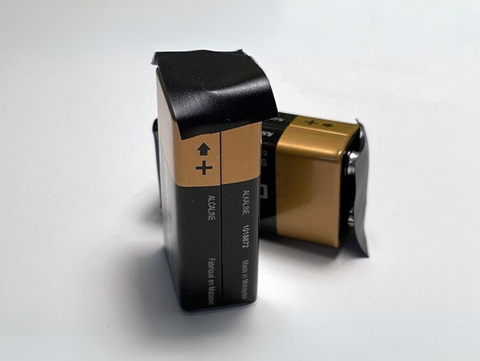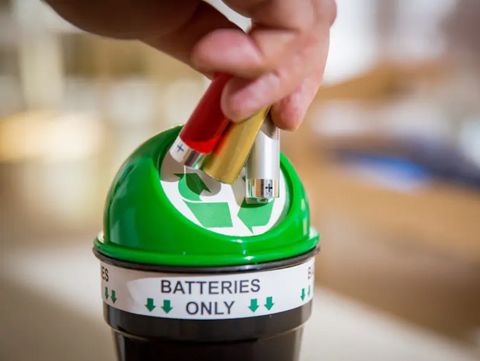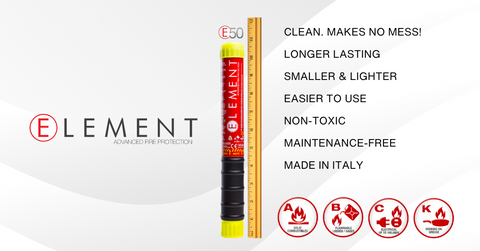Remember touching a 9 volt battery to your tongue? That buzz, even with seemingly dead batteries, poses a major fire risk if just tossed into a junk drawer and not properly disposed of. This jarring video shows how quickly an improperly stored 9V battery in your drawer can ignite a catastrophic chain of events that cause an electrical fire. Understanding the unique risks posed by 9V batteries, and the best measures to combat these incidents is crucial for protecting yourself against this impending electrical fire.
Preventing Electrical Fires Started By Batteries
Taking fire prevention measures to avoid electrical fires doesn't stop with major tasks like regular safety inspections of electrical systems by an electrician or with maintaining correct appliance wattage so you don't cause the breaker box or wiring system to overload. Preventative measures also extend to seemingly small things like the proper storage and disposal of batteries. Even the potentially dead batteries may still have enough charge in them to start a fire if it comes in contact with conductors and is sitting close to combustible surfaces. In this case even a "dead" battery becomes a ticking time bomb just waiting to catch fire.
Safety Tips For Disposing 9V Batteries to Avoid Starting An Electrical Fire
9V batteries are everywhere. They are used in appliances, light fixtures and, ironically, smoke detectors installed on every level of your home. These batteries can easily become the ignition point for fires when stored or discarded improperly. The terminals of these batteries can create a circuit if it comes into contact with metal objects or other batteries. This can lead to sparks that can ignite flammable materials. Negligence is a common cause of electrical fires that turns a simple mistake into a potential electrical fire hazard at your home or business. Follow these guidelines to safely dispose of your 9V batteries and mitigate the risk of fire:
1. Cover the Terminals

Ensure that the positive and negative terminals are covered with electrical tape before disposing of a 9V battery. This simple step can prevent the terminals from coming into contact with other conductive objects. This effectively reduces the risk of a short circuit and the potential fire in your home.
2. Use Battery Recycling Bins

Many communities offer battery recycling programs or have designated battery recycling bins in public places. These facilities are equipped to handle 9V batteries and other types safely. This ensures that the batteries are disposed of in an environmentally friendly and safe manner without the risk of any residential fires.
3. Follow Local Disposal Guidelines

(California state law states that batteries must be disposed at an authorized recycling center)
Always adhere to your local area's specific guidelines for battery disposal. Some regions may have special requirements or designated drop-off points for hazardous materials, including batteries.
4. Store Used Batteries Safely

You should store your 9V batteries in a safe place away from flammable materials and out of reach of children if you cannot immediately dispose of them. Ensure that the terminals are covered and that they are kept in a non-conductive (plastic) container to prevent causing a fire.
How To Fight Electrical Fires
Why Traditional Fire Extinguishers May Not Put Out An Electrical Fire
One thing you should never do when there is any kind of an electrical fire is use water to extinguish the fire. This can exacerbate the fire or lead to electrocution! At the very least, this can permanently cause water damage to the surroundings. Most people's first response might be to grab a traditional fire extinguisher, but remember, not all extinguishers are equal in combating electrical fires. If the traditional fire extinguishers are not designed to combat class C fires (Electric Fires) they will not be a safe option and will make matters worse.
The Best Defense Against Electrical Fires
Element is rated to fight electrical fires up to 100,000V. Most houses have up to 240V, the average factory operates with 480V, and New York City's third rail has 625V. Element is designed to tackle electrical fires without the risk of electrocution or the mess left by the traditional water, powder or foam extinguishers. No matter if the electric fire is caused by improper electrical work, faulty wiring, faulty electrical outlets or appliances, misuse of extension cords, overloaded circuit breaker or just improperly stored batteries; Element is the right choice to put out the fire.
Element operates by emitting potassium free radicals that suffocate the fire by altering oxygen molecules so the fire cannot consume it, halting the combustion process. This method is safe and extremely effective for fighting electrical fires. This makes Element an essential fire protection tool for any home or business.
With proper knowledge, preventive measures against potential causes, and the right fire safety equipment like the Element fire extinguisher, electrical fires can be put out with minimal damage.
Protect yourself against electrical fires with Element.


